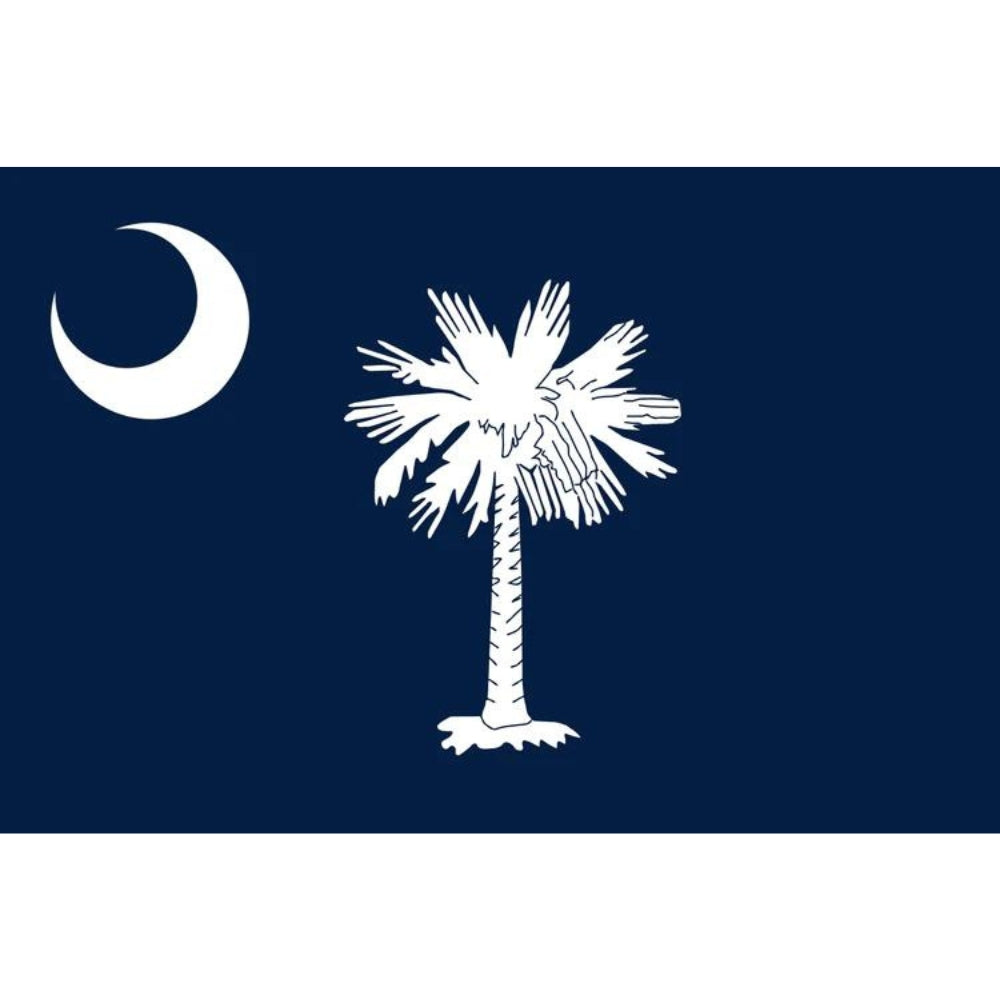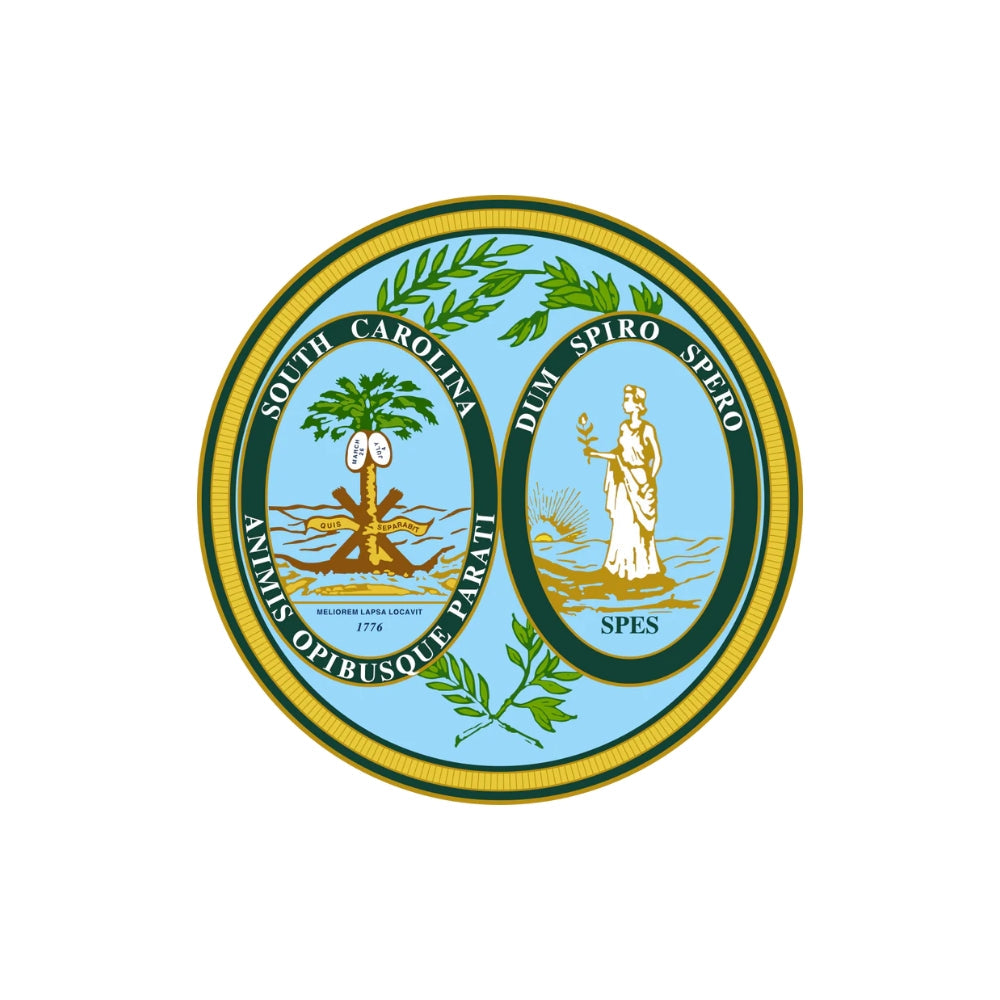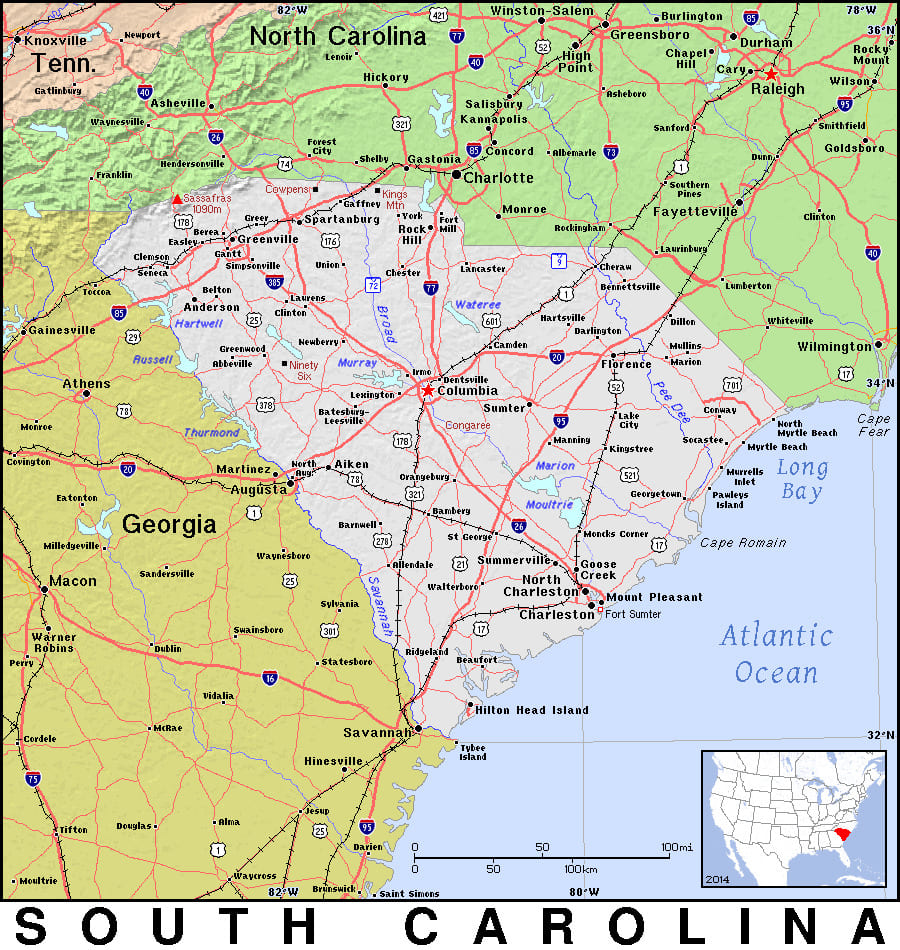Explore the Fascinating History of South Carolina
Take our South Carolina Trivia Quizzes for a Chance to Win a 6-Month Subscription to History By Mail!

The History of South Carolina
Journey Through South Carolina Trivia
Welcome to our South Carolina history and trivia page, presented by History By Mail. Join us as we embark on a journey through the captivating past and cultural tapestry of the Palmetto State. From the ancient indigenous civilizations, such as the Cherokee and Catawba, to the arrival of European explorers and the modern era, we'll delve into South Carolina's hidden gems and challenge your knowledge with entertaining quizzes. Let's uncover the rich history and intriguing trivia of South Carolina together.
South Carolina, known as the Palmetto State, is a land of historical significance and natural beauty. From the historic city of Charleston with its charming architecture and rich maritime heritage to the picturesque plantations and gardens of the Lowcountry, South Carolina holds a captivating legacy. Explore the stories of the American Revolution and the Civil War, the influential figures like Andrew Jackson and Robert Smalls, and the Gullah Geechee culture that has shaped the state's identity.
Join us as we unravel the intriguing history and trivia of South Carolina, delving into its role in the founding of the nation, the cultivation of indigo and rice, and the legacy of African American contributions.
Facts about South Carolina
State Abbreviation: SC
Capital: Columbia
Name Origin: The Carolinas were named after King Charles I of England.
Nickname: Palmetto State
Statehood: May 23, 1788 (8th State)
State Motto: "Animis opibusque parati" (Prepared in mind and resources) and "Dum spiro spero" (While I breathe, I hope)”

South Carolina's Flag
The state flag of South Carolina features a blue field with a white palmetto tree in the center and a white crescent on the upper left corner. The flag has a simple yet distinctive design that holds historical and symbolic significance. The blue color represents the valor and loyalty of the South Carolina citizens. The palmetto tree, which is the state tree of South Carolina, is a symbol of strength and resilience. It commemorates the role of a palmetto fort on Sullivan's Island in Charleston Harbor during the American Revolutionary War. The fort, built from palmetto logs, successfully defended against British attacks. The white crescent represents the silver emblem worn on the caps of South Carolina troops during the Revolutionary War and is a symbol of liberty. Together, the palmetto tree and crescent create a unique and recognizable flag that represents the proud heritage and spirit of South Carolina.
South Carolina's Great Seal
The Great Seal of the State of South Carolina is a significant emblem that represents the state's history, values, and sovereignty. The seal consists of a circular design with a central image surrounded by a decorative border. At the center of the seal is a palmetto tree, a symbol deeply rooted in South Carolina's heritage. The palmetto tree represents strength, resilience, and the state's defense during the Revolutionary War. It is accompanied by an oak branch, which symbolizes strength and independence.
Surrounding the central image are two elliptical rings. The outer ring bears the inscription "South Carolina" at the top and "Animis Opibusque Parati" at the bottom, which translates to "Prepared in Mind and Resources." This motto reflects the state's readiness to defend its principles and embrace opportunities.
Within the inner ring are two elliptical borders. The upper border features 13 stars representing the original 13 colonies and symbolizing unity and solidarity. The lower border contains the phrase "Quis Separabit?" meaning "Who will separate us?" This phrase emphasizes the state's determination to maintain its sovereignty and unity.

--- State Trivia #1 ---
History of South Carolina
South Carolina, with its rich history and diverse cultural tapestry, has a compelling past that shaped its identity and influenced the nation. The state's earliest history can be traced back 13,000 years when archaic communities inhabited the region, undergoing transformations alongside other cultures in the area. By the time Europeans arrived, South Carolina was home to 29 native nations, primarily falling under the Eastern Siouan and Cusaboan culture groups.
European exploration of the coast began in 1521, with subsequent attempts by the Spanish and French to establish colonies proving unsuccessful. In 1663, King Charles II of England granted a charter to wealthy aristocrats, and the colony was named Carolina as a buffer zone between Spanish territory and English colonies. The first English settlement was established in 1670 at Albemarle Point but was later relocated to Charleston due to challenging conditions.
South Carolina officially separated from North Carolina in 1729, with Charleston playing a significant role in the colonies' affairs. During the Revolution and the Civil War, Charleston witnessed extensive military action. In the 1800s, the state played a prominent role in opposing the federal government and entrenching slavery, becoming the largest slave state by percentage of the population enslaved. Strict laws were enacted to maintain the dominance of the white minority over the black majority.
The Nullification Crisis of 1832, led by South Carolinian John C. Calhoun, exemplified the state's pro-slavery stance. South Carolina became the first state to secede from the Union in 1861, igniting the Civil War with the firing on Fort Sumter in Charleston Harbor. Following the war, South Carolina briefly experienced expanded rights for Black Americans during Reconstruction, only to face their swift reversal during the Jim Crow era.
Despite its history as a stronghold of slavery, South Carolina exhibited comparatively less violence during desegregation and was among the swiftest former Confederate states to remove the Confederate flag from government buildings in response to racial violence. In recent times, South Carolina has transformed into a popular tourist destination, shifting its focus from traditional manufacturing and agriculture sectors.
Notable historic sites in South Carolina include Fort Sumter National Monument, Fort Moultrie, Fort Johnson, and the USS Yorktown aircraft carrier in Charleston Harbor. Visitors can also explore the Middleton, Magnolia, and Cypress Gardens in Charleston, as well as Cowpens National Battlefield. Hilton Head resorts and the Riverbanks Zoo and Botanical Garden in Columbia are also worth exploring, adding to the state's vibrant tourist attractions.
State Symbols
Fun Facts
- On Hilton Head Island visitors can find a mysterious circle of 4,000-year-old shells called the Sea Pines Shell Ring. It may have been a ceremonial area for Native Americans.
- At Patriots Point in Charleston Harbor, visitors can explore naval ships including a submarine, a destroyer, and the U.S.S. Yorktown aircraft carrier.
- Baseball player Shoeless Joe Jackson; civil rights activist Marian Wright Edelman; and musicians James Brown, Chubby Checker, and Dizzy Gillespie were all born in South Carolina.
--- State Trivia #2 ---

Things To Do in South Carolina
- Visit Charleston: Explore the historic streets of Charleston, known for its well-preserved architecture, cobblestone streets, and charming southern hospitality. Take a carriage ride through the city's historic district, visit iconic landmarks like Rainbow Row and the Battery, and immerse yourself in the city's rich history.
- Explore the Beaches: South Carolina boasts beautiful coastal areas with stunning beaches. Head to Myrtle Beach, a popular tourist destination known for its wide sandy shores, amusement parks, and vibrant boardwalk. For a more serene beach experience, visit Hilton Head Island, where you can relax, play golf, or indulge in water sports.
- Discover Plantations and Gardens: Take a step back in time by exploring the historic plantations and gardens of South Carolina. Visit Magnolia Plantation and Gardens, where you can wander through breathtaking gardens, take a tour of the plantation house, and learn about the history of the Lowcountry. Boone Hall Plantation, Middleton Place, and Drayton Hall are also worth exploring.
- Explore Congaree National Park: Embark on an outdoor adventure at Congaree National Park, home to one of the largest intact expanse of old-growth bottomland hardwood forests in the United States. Hike along scenic trails, paddle through the park's waterways, and marvel at the towering trees and diverse wildlife.
- Discover History at Fort Sumter: Visit Fort Sumter National Monument in Charleston Harbor, the site where the first shots of the Civil War were fired. Take a boat tour to the fort, explore its grounds, and learn about the events that led to the start of the war. It's a significant historical site that offers insights into the nation's past.

General Map of South Carolina
South Carolina, known as the "Palmetto State," is a captivating destination located in the southeastern region of the United States. Renowned for its rich history, beautiful beaches, and vibrant culture, South Carolina offers a wealth of experiences for visitors to discover and savor.
Famous People From South Carolina
--- State Trivia #3 ---
FREQUENTLY ASKED QUESTIONS (FAQ) ABOUT SOUTH CAROLINA
South Carolina was named in honor of King Charles I of England. The Latin form of his name is "Carolus," which is where the state's name originates. The English Crown granted a charter for the Carolinas in 1663, which marked the beginning of the colonization of the region.
Fort Sumter, located in Charleston Harbor, holds immense historical significance as the site where the American Civil War began. The Confederate attack on Fort Sumter in April 1861 marked the opening shots of the war. This event ignited a conflict that would shape the nation's history for years to come.
South Carolina ratified the U.S. Constitution on May 23, 1788, becoming the eighth state to join the Union.
Septima Poinsette Clark was an influential African American educator and civil rights activist from South Carolina. She played a crucial role in promoting education and voter registration for African Americans.
Related Resources
- Official Website of the State of South Carolina: The official website provides information about the state government, services, business resources, tourism, and more. Visit: https://www.sc.gov/
- Discover South Carolina: Explore South Carolina's attractions, events, outdoor activities, accommodations, and plan your visit. Visit: https://discoversouthcarolina.com/
- South Carolina State Parks: Discover and explore South Carolina's beautiful state parks, trails, camping sites, and recreational activities. Visit: https://southcarolinaparks.com/
- South Carolina Department of Archives and History: Learn about South Carolina's rich history, access historical records and documents, and explore educational resources. Visit: https://scdah.sc.gov/
- South Carolina Department of Natural Resources: Discover South Carolina's diverse natural resources, wildlife, conservation efforts, hunting and fishing regulations, and outdoor activities. Visit: http://www.dnr.sc.gov/
- South Carolina African American Heritage Commission: Explore the African American history and heritage of South Carolina, including historical sites, events, and resources. Visit: https://scafricanamerican.com/
- Historic Charleston Foundation: Learn about the historic preservation efforts in Charleston, South Carolina, and discover the city's rich architectural and cultural heritage. Visit: https://www.historiccharleston.org/
- South Carolina State Museum: Visit the state's largest museum to explore South Carolina's history, art, science, and cultural exhibits. Visit: https://scmuseum.org/
- Charleston Area Convention and Visitors Bureau: Plan your trip to Charleston and the surrounding area, discover attractions, accommodations, dining options, and more. Visit: https://www.charlestoncvb.com/
- Myrtle Beach Area Chamber of Commerce: Explore Myrtle Beach and the Grand Strand region, find information on attractions, accommodations, events, and vacation planning. Visit: https://www.visitmyrtlebeach.com/








